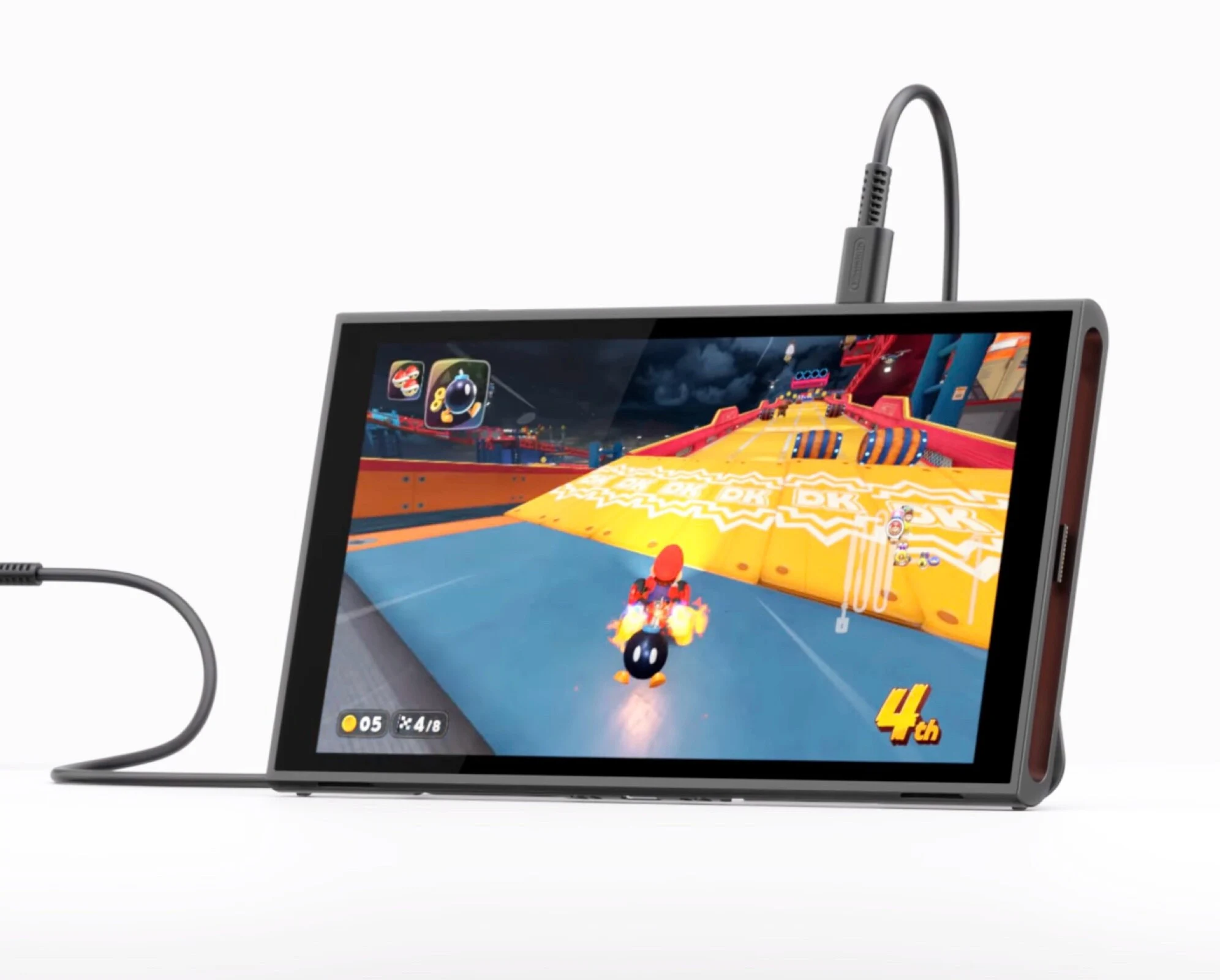Key Takeaways
1. The Nintendo Switch 2 supports 4K at 60 fps when docked and 1080p at 120 fps in handheld mode.
2. Speculations suggest it uses the Nvidia Tegra T239 chipset with 12GB of RAM and an Ampere GPU.
3. The console’s performance is comparable to the Xbox Series S, with around 3.9 TFLOPs in docked mode.
4. The Switch 2 features hardware-accelerated ray tracing and AI-driven upscaling through dedicated RT and Tensor processing units.
5. It supports Variable Refresh Rate (VRR) in handheld mode to reduce screen tearing during gameplay.
The Nintendo Switch 2 was revealed on Wednesday, and many hands-on videos have already appeared online. While it’s known that games can operate at 4K with 60 frames per second when docked or 1080p at 120 fps in handheld mode, Nintendo hasn’t shared any specifics about the built-in processor or how the console performs overall.
Potential Specifications Leaked
There are speculations that the Switch 2 utilizes the Nvidia Tegra T239, which boasts eight ARM Cortex-A78E performance cores, 12GB of RAM, and an Ampere GPU with 1,536 CUDA cores. Just for context, this GPU architecture was rolled out with the GeForce RTX 3000 series. Nvidia has released some technical information about the Nintendo Switch 2 on their blog. Although Nvidia doesn’t specifically name the Tegra T239 chipset, they assert that the chip delivers ten times the GPU performance of the original Nintendo Switch.
Performance Insights
In docked mode, this equates to around 3.9 TFLOPs, meaning that the hybrid console will be as fast as the Xbox Series S. Nvidia points out that the chip has dedicated RT and Tensor processing units for hardware-accelerated ray tracing and DLSS, which provides AI-driven upscaling to higher resolutions. Additionally, the Tensor cores enable the Nintendo Switch 2’s camera to follow the user’s face and isolate it via AI technology. Another noteworthy detail is that the Switch 2 supports VRR in handheld mode, allowing the display’s refresh rate to adjust according to the games’ frame rates, thus minimizing screen tearing.
Nvidia’s recent insights have sparked excitement in the gaming community, with many eager to see how these advancements will influence gameplay.
Source:
Link


Leave a Reply